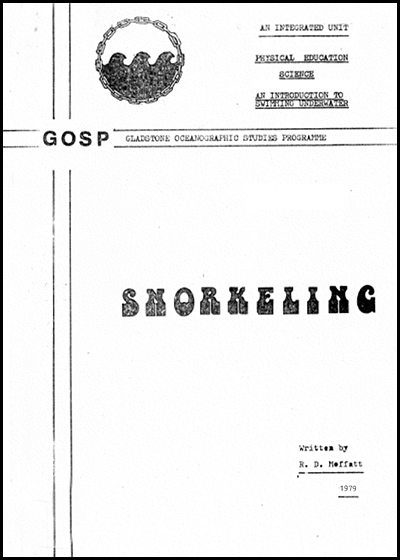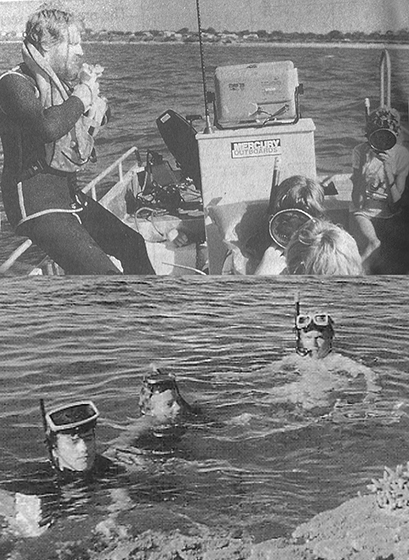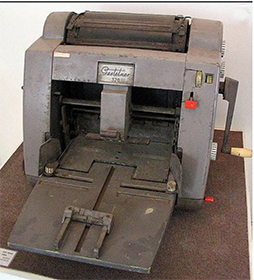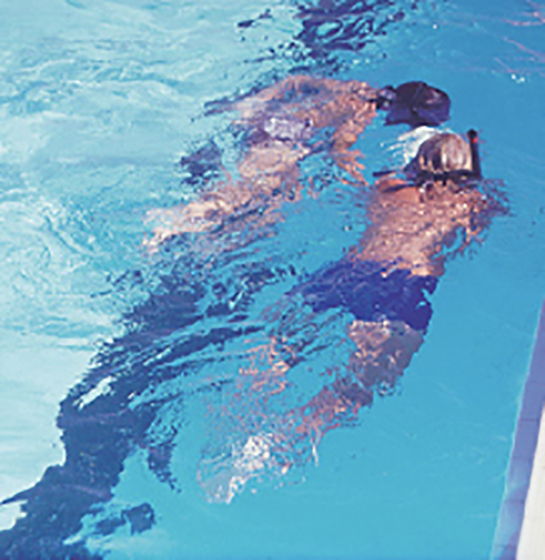1979 Snorkeling classroom notes

ISBN : None allocated
Published Date : 01 June 1979
Product Code : 1979 GSHS
Format : Free PDF for download
By Bob Moffatt
Wet Paper publications non-commercial school licence
The publisher and author/s of this pdf file grant to the school a revocable, non-exclusive, non-transferable right and licence to use the content, exercises, lab and field work lesson notes within the school for educational purposes only.
Yearly record keeping
To ensure fair payment is made to collecting societies, educational institutions are to record the digital ISBN above.
- To do this go to the school office and ask the IT department or whoever looks after digital book licences to record the ISBN in the school digital library licence catalogue.
Copyright
Except as permitted by the Copyright Act 1968 (Cth), you may not reproduce any of the contents of this publication, without the written permission of the copyright owner.
The title to, and intellectual property rests with the publisher's author/s, illustrators, photographers and design consultants and nothing in the agreement should be construed as transferring those rights to the school.
Educational exemption
There are exemptions under the Act that allow educational and government use of text, images and music scores for educational purposes.
These exemptions are in Part VB of the Copyright Act 1968 (Cth), where you are entitled to reproduce or communicate 10% of the words or one chapter from this file for educational use within your school. If you wish to reproduce or communicate MORE than 10% contact the copyright owner.
For more information, see www.copyright.com.au and www.copyright.org.au.
Contents
- Introduction
- Using your equipment
- Problems with snorkeling
- Snorkeling Science
- Skills exam
- Appendix
The pedagogy was original
The idea of combining snorkelling with the new Qld Multistrand Scince Syllabus was an original idea by Bob Moffatt however the content was based on ideas from a great book called the Joy of Snorkeling, An Illustrated Guide Paperback – by Herb Blount and Steve Taylor (Author) - you can still buy it on Amazon now.
For example, Bob used the concept of snorkelling to
- Teach pressure and its affect on human physiology by getting students to feel it in the ears in a pool first and then teach the science concept or
- Teach microorganisms (infection), circulation and core body temperature, from the pain of a coral cut infection or hypothermia when all the students got out of the cold water.
The less academic kids of Gladstone responsed well but it was difficult to get the ideas down on paper.
The 2020 snorkelling set of notes evolved from these very rough ideas but the concept of combining science with human feelings seems to be lost in the modern curriculum - probably cause you can't feel it on a smart phone tick toc video!!!
Why one L?
Snorkeling with a single 'l' is the American spelling of the water-based activity. The alternative spelling, 'snorkelling' is the UK spelling of the term. It's as simple as that
Publication was a nightmare
The notes were run off on a gestner machine.
A set of masters was typed onto a waxed sheet which was positioned onto the machine. Ink was then squeezed thru the wax paper and into foolscap (!) sheets of paper.
You can see how the difficult it was to draw with the stylus on pages 3 and 4!!
Acknowledgements
GOSP stood for the Gladstone Oceanographic Studies Program and was the brainchild of David Kopelke and Bob Moffatt in the late 1970's.
Funding before GOSP came from the Gladstone SHS P and C associaiton who supplied funds for masks, snorkels and fins.
Wet Paper Publications would like to thank the following for their assistance in the design and trialling of this module:
Gladstone SHS P and C Association, Year 8c Science class of 1979 and David Kopelke from the Boyne Island Field Study Centre.





